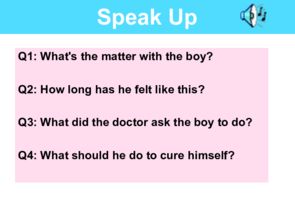Content:
Fishing is an age-old pastime that has been enjoyed by countless individuals around the world. Whether you are a beginner or an experienced angler, mastering the art of fishing involves not only understanding the techniques but also selecting the right bait. In this article, we will discuss some valuable tips and techniques for choosing and using bait to improve your chances of catching fish.
Know Your Target Species
Before you start fishing, it is crucial to research and understand the species you are targeting. Different fish species have varying preferences when it comes to food, so knowing their diet will help you choose the appropriate bait. For example, if you are fishing for bass, using live bait such as worms, crickets, or minnows may be more effective than artificial lures.
1 Freshness Matters
When it comes to live bait, freshness is key. Fish are more likely to bite on bait that looks and smells natural. Make sure to keep your live bait in a cool, aerated container to maintain its freshness. For artificial baits, check for any signs of wear and tear, and replace them if necessary.

Select the Right Type of Bait
There are two main types of bait: natural and artificial. Each type has its advantages and disadvantages, so it is essential to choose the right one based on your fishing environment and target species.
1 Natural Bait
Natural bait includes live or dead organisms that fish naturally feed on. This can include worms, insects, minnows, crayfish, and more. The advantage of natural bait is that it is often more appealing to fish, as it resembles their natural prey. However, it can be challenging to keep live bait fresh and can be time-consuming to catch.
2 Artificial Bait
Artificial bait is man-made and includes lures, spinners, jigs, and more. The advantage of artificial bait is that it can be used in various fishing environments and is easier to maintain than live bait. Additionally, artificial bait can be more durable and last longer than natural bait. However, some fish may be less likely to bite on artificial bait, as it does not always resemble their natural prey.
Consider the Water Conditions
Water conditions can significantly impact your fishing success. Factors such as temperature, clarity, and flow rate can affect how fish react to different baits. Here are some tips to consider:
1 Temperature
Fish are more active and likely to bite when the water temperature is within their preferred range. Generally, fish are more active in cooler water, so you may want to use more enticing baits in warmer water to attract their attention.
2 Clarity
Clear water can be challenging for fishing, as fish may be more cautious and less likely to bite. In such conditions, using smaller and more natural-looking baits can be more effective. In murky water, however, fish may be less picky, and brighter or more colorful baits might work better.
3 Flow Rate
Fish tend to congregate in areas with slower currents, as it allows them to conserve energy. When fishing in fast-moving water, consider using heavier baits to ensure they stay in the strike zone.
Present Your Bait Effectively
Once you have chosen the right bait, it is essential to present it effectively to entice fish. Here are some techniques to consider:
1 Retrieve Rate
The speed at which you retrieve your bait can significantly impact its effectiveness. Fast retrieves can create a lot of movement, which can attract fish, while slow retrieves can be more subtle and appealing to cautious fish.
2 Vary Your Techniques
Experiment with different techniques, such as casting, pitching, or dragging your bait. Each technique can trigger different responses from fish, so it is essential to be adaptable and adjust your approach based on the situation.
3 Use a Scented Bait
Applying a scent to your bait can make it more appealing to fish. Scented baits can be particularly effective in murky water or when fish are not actively feeding.
In conclusion, mastering the art of fishing involves understanding the preferences of your target species, selecting the right bait, considering water conditions, and presenting your bait effectively. By following these tips and techniques, you can improve your chances of catching fish and enjoy a successful fishing experience. Happy fishing!












